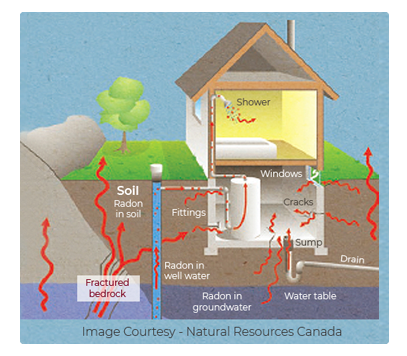Radon testing helps detect elevated levels of radon, a radioactive, colourless and odourless gas.
In confined spaces, radon can be a significant hazard to health, and is the second leading cause of lung cancer, according to Health Canada. Radon testing is the only method to determine if your home has elevated levels of radon.
What is Radon? Why Would it be in my Home?
Radon is invisible, odourless, tasteless and emits ionizing radiation.

As a gas, radon can move freely through the soil, enabling it to escape into the atmosphere or seep into buildings. When radon escapes from bedrock into outdoor air, it is diluted to such low concentrations that it poses a negligible threat to health. However, if a building is built over bedrock or soil that contains uranium, radon gas can be released into the building through cracks in foundation walls or, floors, or gaps around pipes and cables.
When radon is confined to enclosed or poorly ventilated spaces, it can accumulate to high levels. Radon levels are generally highest in basements and crawl spaces because these areas are nearest to the source and are usually poorly ventilated. (Source: Health Canada)






